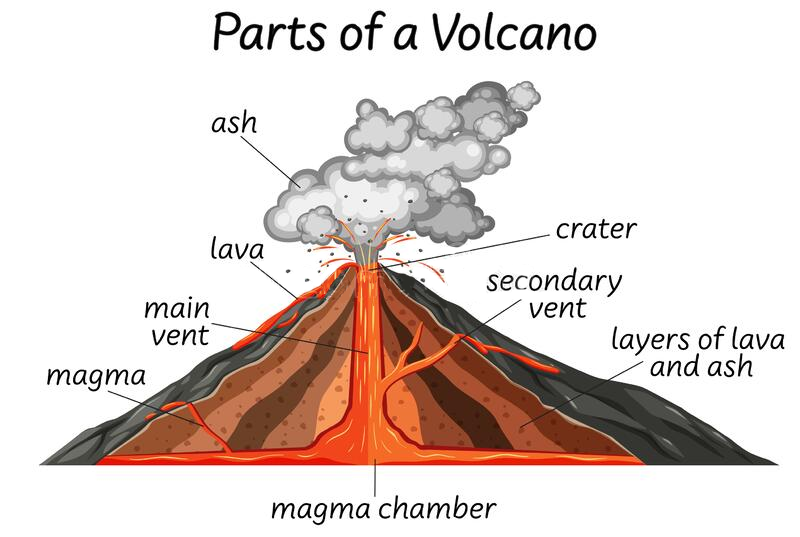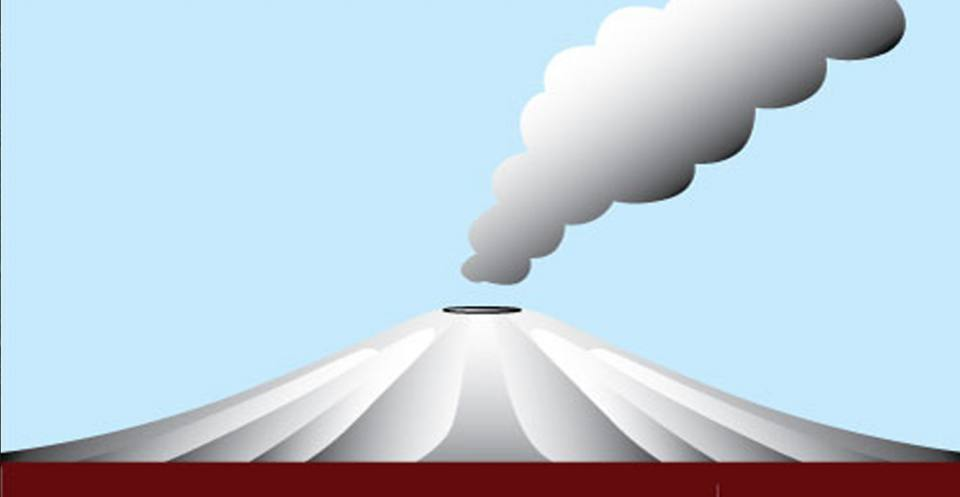Geography
Sakurajima Volcano Japan
- 26 Jul 2022
- 6 min read
For Prelims: Volcanoes and types
For Mains: Volcanoes and its impacts environment
Why in News?
Recently, the Sakurajima Volcano erupted on Japan’s major western island of Kyushu.
- In 2021, the Fukutoku-Okanoba Submarine Volcano exploded in the Pacific Ocean, off Japan.
What is Sakurajima Volcano?
- Sakurajima is one of Japan’s most active volcanoes and eruptions of varying levels take place on a regular basis.
- It is an active stratovolcano.
- The largest historical eruptions of Sakurajima took place during 1471-76 and in 1914.
- Its eruption has been recorded since the 8th Century.
- Due to its frequent deposition of ash on Kagoshima, and due to its explosive potential, it is considered as one of the very dangerous volcanoes.
What is a Volcano?
- About:
- A volcano is an opening on the surface of a planet or moon that allows material warmer than its surroundings to escape from its interior.

- When this material escapes, it causes an eruption. An eruption can be explosive, sending material high into the sky. Or it can be calmer, with gentle flows of material.
- On Earth, the erupted material can be liquid rock ("lava" when it's on the surface, "magma" when it's underground), ash, cinders, and/or gas.
- A volcano is an opening on the surface of a planet or moon that allows material warmer than its surroundings to escape from its interior.
- Reasons for Magma Rise:
- Magma can rise when pieces of Earth's crust called tectonic plates slowly move away from each other. The magma rises to fill in the space. When this happens, underwater volcanoes can form.
- Magma also rises when these tectonic plates move toward each other. When this happens, part of Earth's crust can be forced deep into its interior. The high heat and pressure cause the crust to melt and rise as magma.
- The final way that magma rises is over hot spots. Hot spots are the hot areas inside of Earth. These areas heat up magma. The magma becomes less dense. When it is less dense it rises. Each of the reasons for rising magma are a bit different, but each can form volcanoes.
- Types:
- Shield volcanoes:
- A volcano produces low viscosity, runny lava, it spreads far from the source and forms a volcano with gentle slopes.
- Most shield volcanoes are formed from fluid, basaltic lava flows.
- Stratovolcano:
- Lava dome:
- The Soufrière Hills volcano, on the Caribbean island of Montserrat, is well known for its lava dome complex at the summit of the volcano, which has gone through phases of growth and collapse. As viscous lava is not very fluid, it cannot flow away from the vent easily when it is extruded. Instead it piles up on top of the vent forming a large, dome-shaped mass of material.

- The Soufrière Hills volcano, on the Caribbean island of Montserrat, is well known for its lava dome complex at the summit of the volcano, which has gone through phases of growth and collapse. As viscous lava is not very fluid, it cannot flow away from the vent easily when it is extruded. Instead it piles up on top of the vent forming a large, dome-shaped mass of material.
- Caldera:
- Shield volcanoes:
What about the Volcanoes in India?
- Barren Island, Andaman Islands (India's only active volcano)
- Narcondam, Andaman Islands
- Baratang, Andaman Islands
- Deccan Traps, Maharashtra
- Dhinodhar Hills, Gujarat
- Dhosi Hill, Haryana
UPSC Civil Services Examination, Previous Year Questions (PYQs)
Prelims
Q. Consider the following statements: (2018)
- The Barren Island volcano is an active volcano located in the Indian territory.
- Barren Island lies about 140 km east of Great Nicobar.
- The last time the Barren Island volcano erupted was in 1991 and it has remained inactive since then.
Which of the statements given above is/are correct?
(a) 1 only
(b) 2 and 3
(c) 3 only
(d) 1 and 3
Ans: (a)
- Barren Island is India’s only active volcano which is located in the Andaman and Nicobar Islands. Hence, statement 1 is correct.
- It is located at about 140 km from Port Blair, southern part of Andaman Island in Andaman Sea. The distance between Barren Island to Great Nicobar is more than the given distance. Hence, statement 2 is not correct.
- First recorded eruption of the volcano dates back to 1787. In the past 100 years, it has erupted at least five times. Then for the next 100 years, it remained silent. It re-erupted massively in 1991. Since then, the eruption has been recorded every two-three years; the latest in the series was February 2016. Hence, statement 3 is not correct. Therefore, option (a) is the correct answer.
Mains
Q. Mention the global occurrence of volcanic eruptions in 2021 and their impact on regional environment. (2021)










